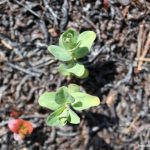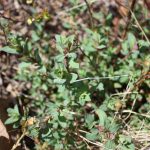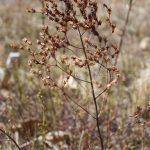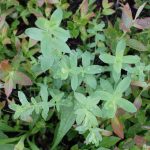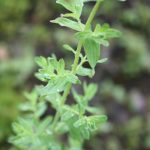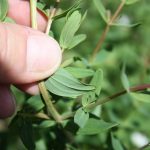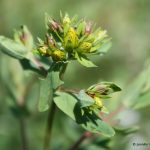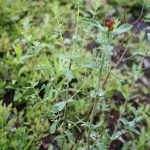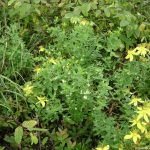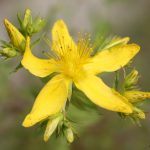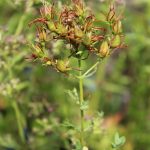Common St. Johnswort
Prepared by Jennifer L. D’Appollonio, Assistant Scientist, University of Maine, Orono, ME 04469. Updated April 2019.
Scientific name: Hypericum perforatum L.
Common name(s): common St. Johnswort, St. Johnswort
Link(s): USDA PLANTS Profile, Go Botany
Images: (to see enlargements [PC]: click on image, then right click and choose “view image”)
- seedling in pruned field, mid-May
- early emergence, late April
- last year’s inflorescence, April
- pre-flower, early June
- lower leaf surface
- detail, spots and perforations
- flowerbuds, late June
- in flower, late July/early August
- flower detail
- fruits
Description:
– perennial
– generally flowers July, August in ME
Stems reddish and branching, 1′-2.5′ tall, woody at base. Leaves oblong, entire, sessile, up to 1.5″ long with numerous, conspicuous translucent dots. Numerous, five-parted yellow 3/4″-1″ wide flowers clustered at branch ends.
-spreads through rhizomes, stems, and seeds
Habitat:
-fields, shores of rivers, man-made disturbed areas
Management:
-Hand pulling
- only on new small plants
-biological control, species that feed off their leaves
- Chrysolina quadrigemina
- hrysolina hyperici
- Aplocera plagiata
- Agrilus hyperici
Over exposure can lead to health problems
- skin lesions
- necrosis
– may be confused with H. punctatum, which has black dots/streaks over the whole petal, whereas H. perforatum has black near the margins; see left sidebar of Go Botany webpage
Source(s):
Heinrich, B. 1976. Flowering phenologies: Bog, woodland, and disturbed habitats. Ecology. 57(5):890-899.
“Washington State.” Washington State Noxious Weed Control Board, www.nwcb.wa.gov/weeds/common-st-johnswort.

